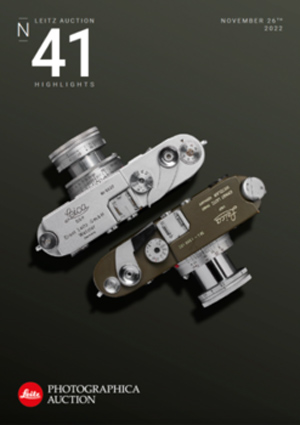03/11/2022
Photographs under the Hammer
Extraordinary scenes – stirring images that stand out from the ceaseless noise of news feeds:
these are the photographs that have anchored themselves in our visual memory, and shaped our collective understanding of the world.
Their scope ranges from contemplative moments and scenes of joy, all the way to images that shock viewers to their core. There is the poignant portrait of Sharbat Gula, the young Pashtun girl with piercing green eyes, photographed in 1984 by Steve McCurry in a refugee camp in North-Western Pakistan. Or the seemingly unconcerned group of people relaxing by the East River against the backdrop of the burning Twin Towers, captured by Thomas Hoepker. Equally unforgotten is Nick Ut’s photograph of children fleeing from a Napalm attack in South Vietnam – an image whose emotional impact is undiminished to this day.

On September 11, 2001, Magnum photographer Thomas Hoepker captured a scene which, retrospectively, became one of the most iconic and controversial reportage pictures of that day: a group of New Yorkers enjoying their lunch-break on the banks of the East River, while behind them, the World Trade Center is engulfed in clouds of smoke.
Yet there are also quiet moments,
such as the portrait of the clown Jimmy Armstrong, smoking a cigarette away from the bustle of the circus tent – photographed by Bruce Davidson at the age of only twenty-four. Or the idiosyncrasies captured by Henri Cartier-Bresson, whose unerring sense for the ‘moment décisif’ – the deciding moment – went on to influence generations of photographers. Also included are private pictures, such as a three-print series of Marilyn Monroe frolicking on Tobay Beach: the images were taken in 1949 – at the height of her metamorphosis from Norma Jeane to global superstar – by her then-lover, the photographer André de Dienes.
Masterpieces such as these exert an enduring fascination: in our modern times, when any number of everyday banalities can be captured by anyone, anywhere, in equally mundane images, outstanding works by truly remarkable photographers hold a perhaps even greater relevance. Leitz Photographica Auction recognises this by placing a renewed focus on photographic prints.
“More than any other camera, the Leica has revolutionised the history of photography – technologically, culturally and aesthetically,”
the auction team explains.

Bruce Davidson was only twenty-four when he captured one of his most famous images: this picture of the circus clown Jimmy Armstrong in a moment of quiet solitude was taken shortly after Davidson had started working for the Magnum Photos agency.

Long before high-gloss portraits shaped our collective image of the Hollywood icon, André de Dienes captured the untainted charm of a young Marilyn Monroe in carefree seaside shots. The candid nature of these pictures, taken on Tobay Beach, reflects the relationship between photographer and model, who were romantically involved at the time. The three-print series will now be auctioned for a good cause.

Lonely, mysterious, almost eery: these are some of the core attributes describing Todd Hido’s work. When Twin Peaks returned to TV screens in 2017, TIME Magazine commissioned Hido to pay homage to David Lynch’s mystery series. The resulting photo essay – imbued with Hido’s typically cinematic aesthetic – was shot at filming locations around the town of Snoqualmie, as well as in the forests of Washington State.
Alexander Sedlak, Director of Leitz Photographica Auction, elaborates:
“The Leica has given rise to an extraordinary variety of images that delight enthusiasts around the world, and have become sought-after collectors’ items. We are pleased to take our 20-year jubilee as an opportunity to re-introduce photographic prints to our auction catalogues.”

Moscow was the third metropolis (after New York and Rome) to become the subject of an in-depth city portrait by the late photographer, film-maker and painter William Klein. His respective explorations resulted in acclaimed photo books. Klein abandoned the rules of discrete street photography in the 1950s, developing a radical visual language that has been highly influential for generations of photographers.
The upcoming November auction in Vienna centres on icons of street photography and photojournalism – two genres that were entirely made possible by the introduction of the Leica camera in the mid-1920s.
“Going forward, we want to offer an exclusive selection of prints that will reflect the rich, multi-faceted art and cultural history from the 1920s to today,” the auction team reveals.
This is set to range from the New Vision movement, reportage and street photography, to classic representatives of American and European photography, as well as works by established contemporary artists.
Photos: Leitz Photographica Auction
Text: Tobias F. Habura-Stern / LFI Leica Fotografie International
